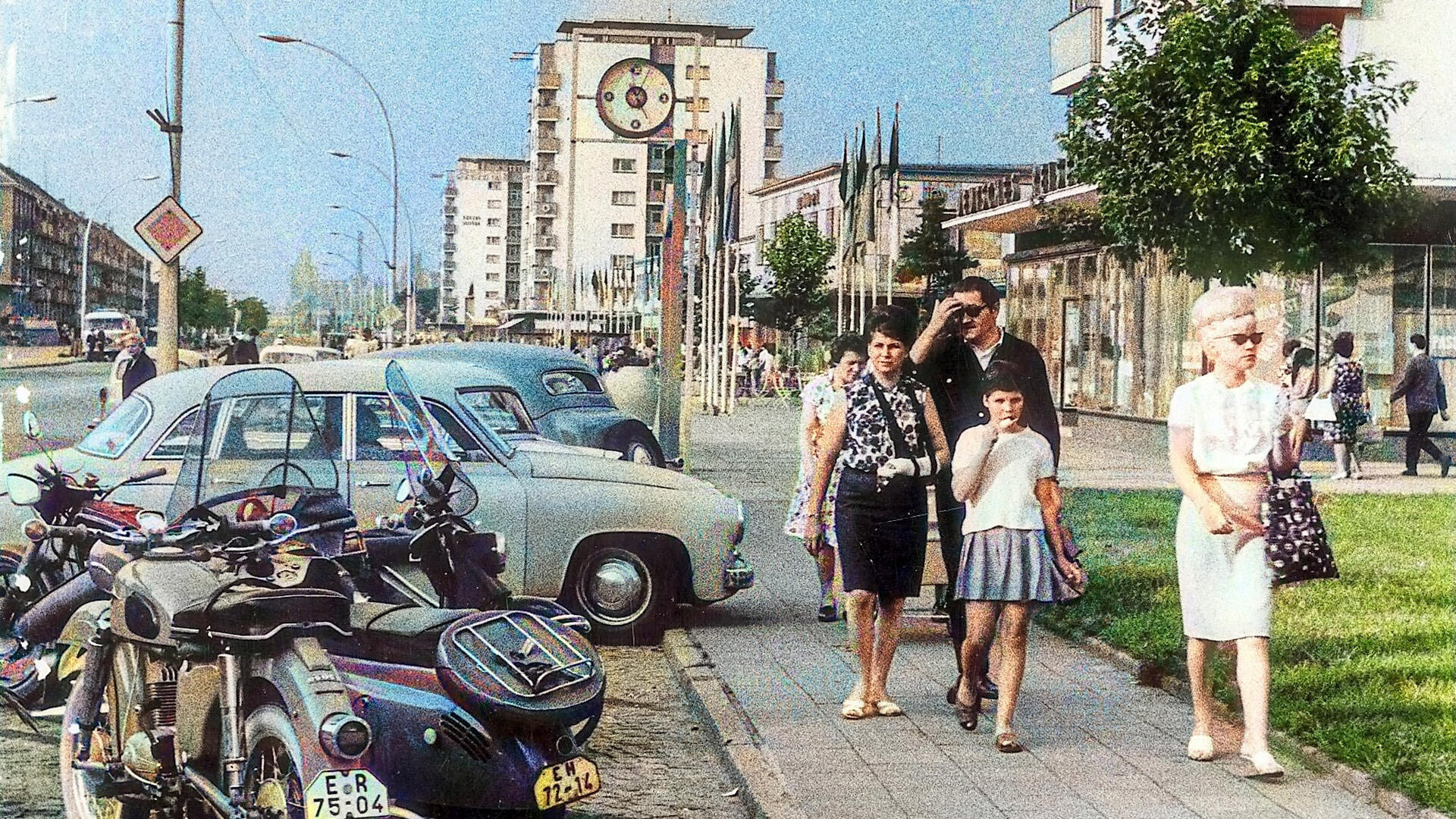
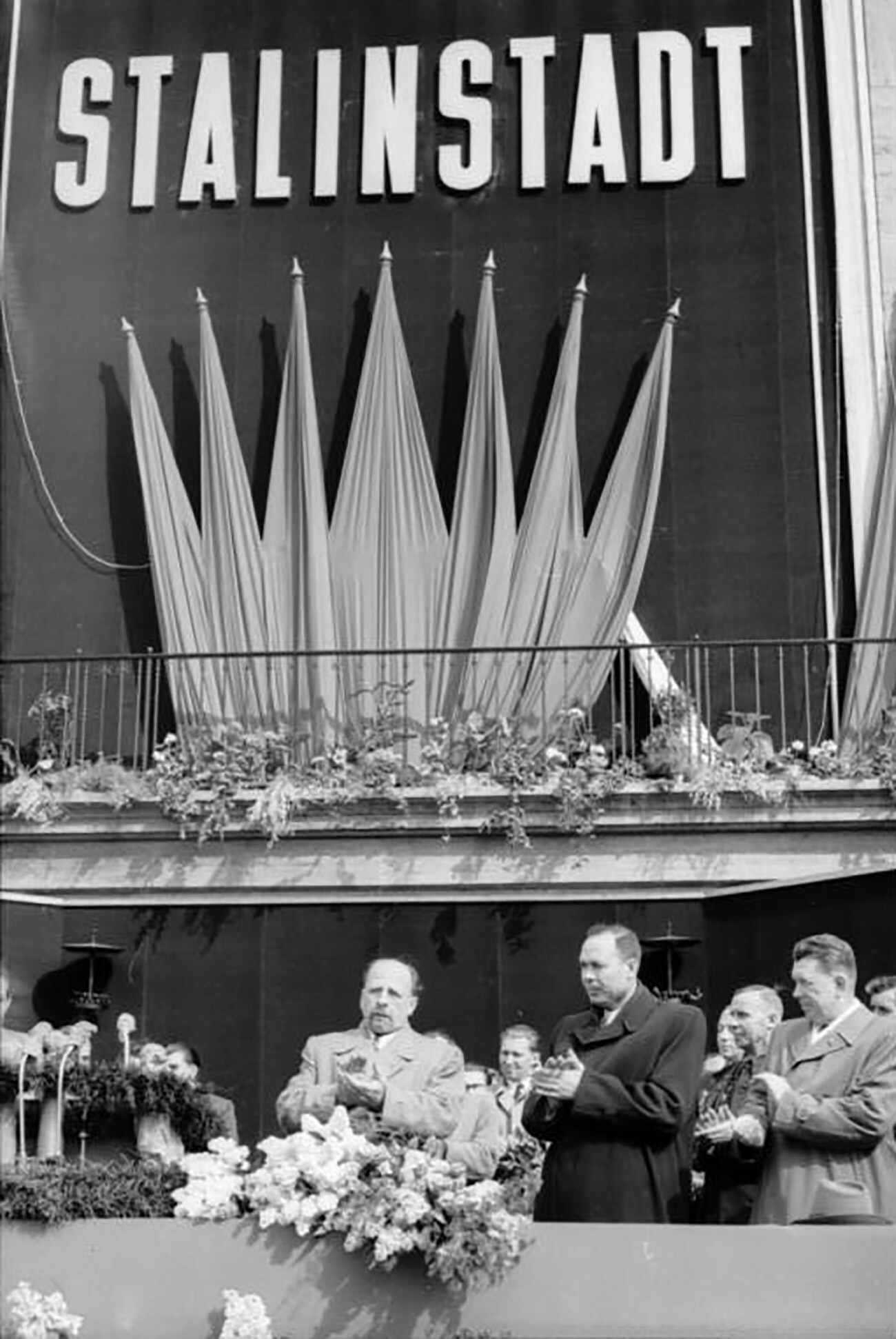
May 7, 1953. The solemn naming of the city after Stalin.
Bundesarchiv“On behalf of the government of the German Democratic Republic, I proudly announce: the first socialist city in the German Democratic Republic receives the name of ‘Stalinstadt’,” Walter Ulbricht, General Secretary of the SED Central Committee (the Socialist Unity Party of Germany), declared on May 7, 1953.
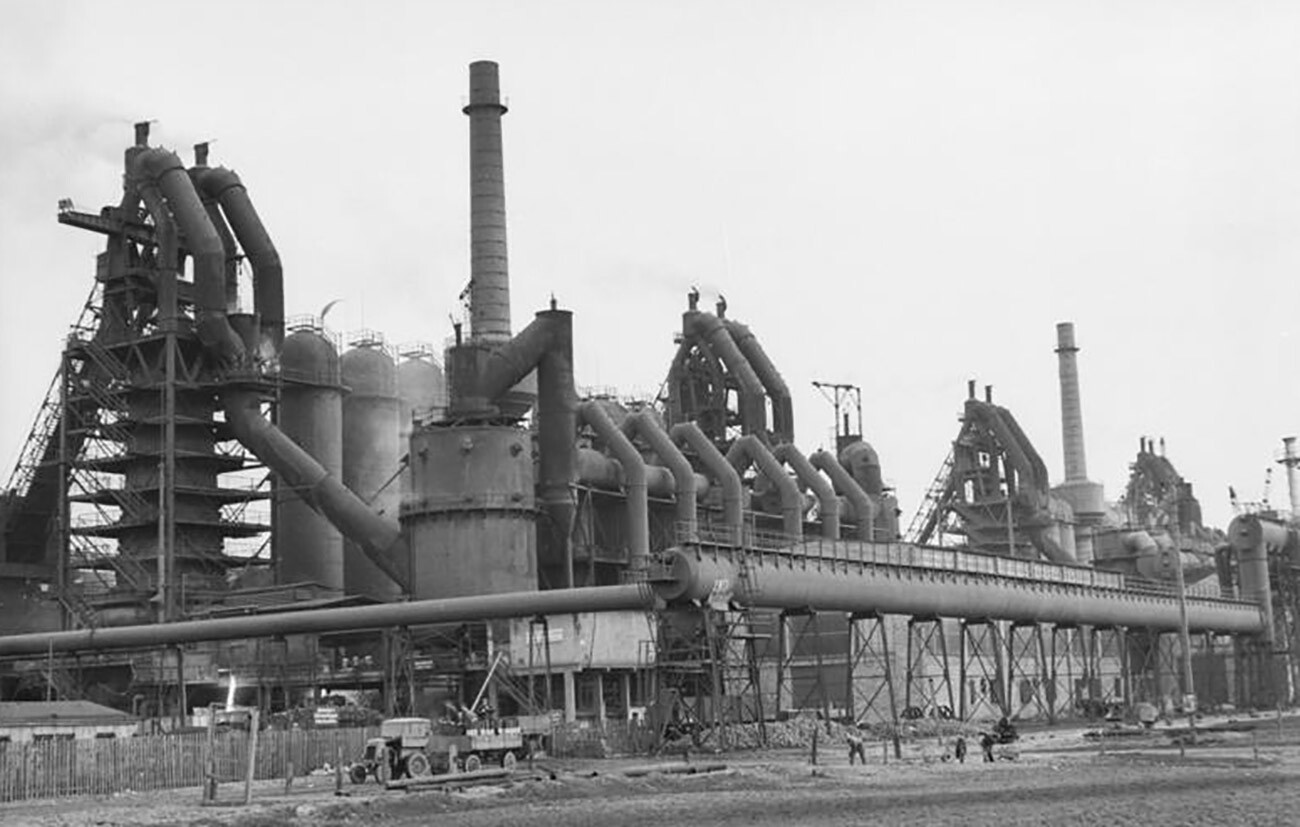
A steelworks.
BundesarchivInitially, the city of metallurgists was planned to be named in honor of the “great son of the German people”, Karl Marx; however, the death of the “leader of nations” on March 5, 1953, changed the intentions of the SED leadership. The new city was given the name of Stalin; the city of Chemnitz was renamed Karl-Marx-Stadt, instead.
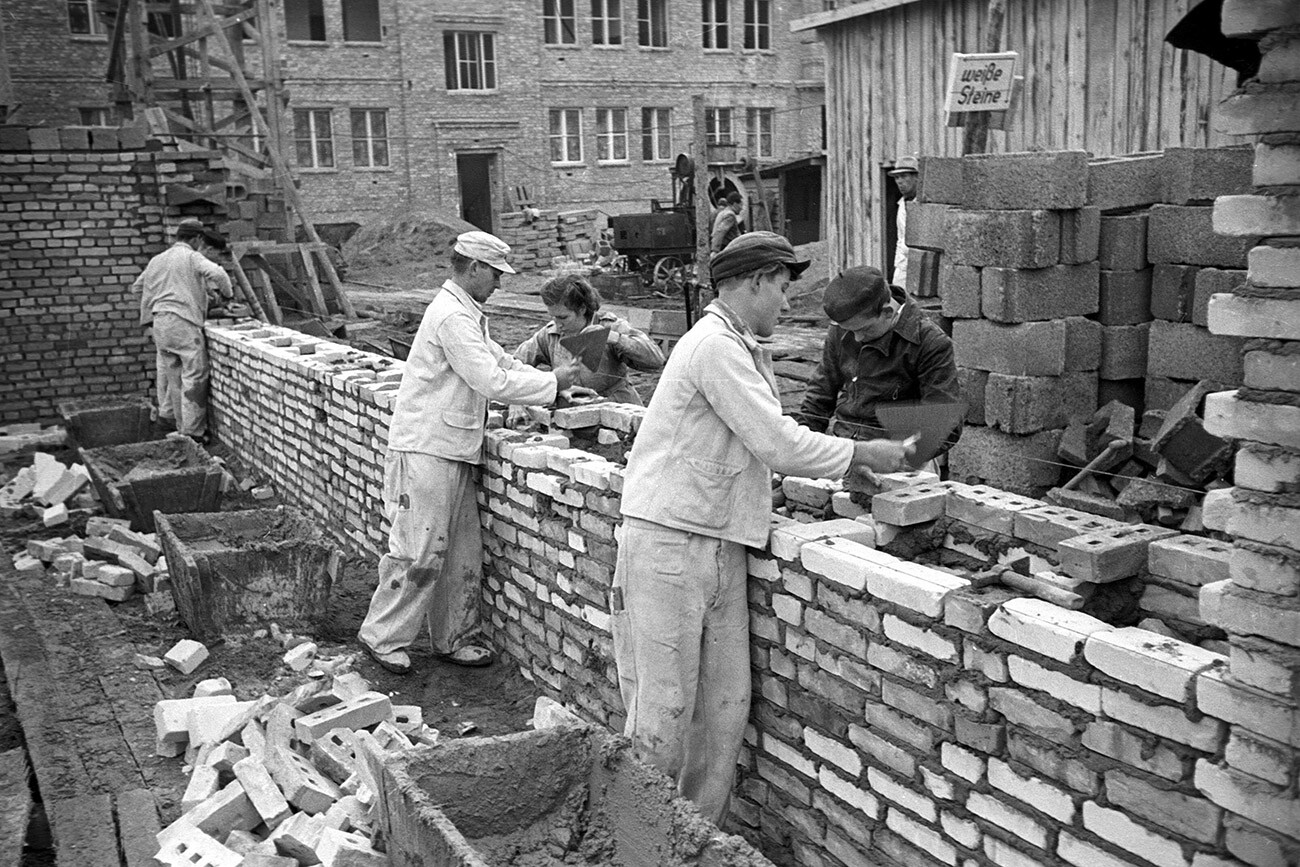
After the separation of Germany into occupation zones, the Ruhr area, the heart of heavy industry of the country, became a part of the Federal Republic of Germany (West Germany). As such, East Germany didn’t have a single metallurgic mill.
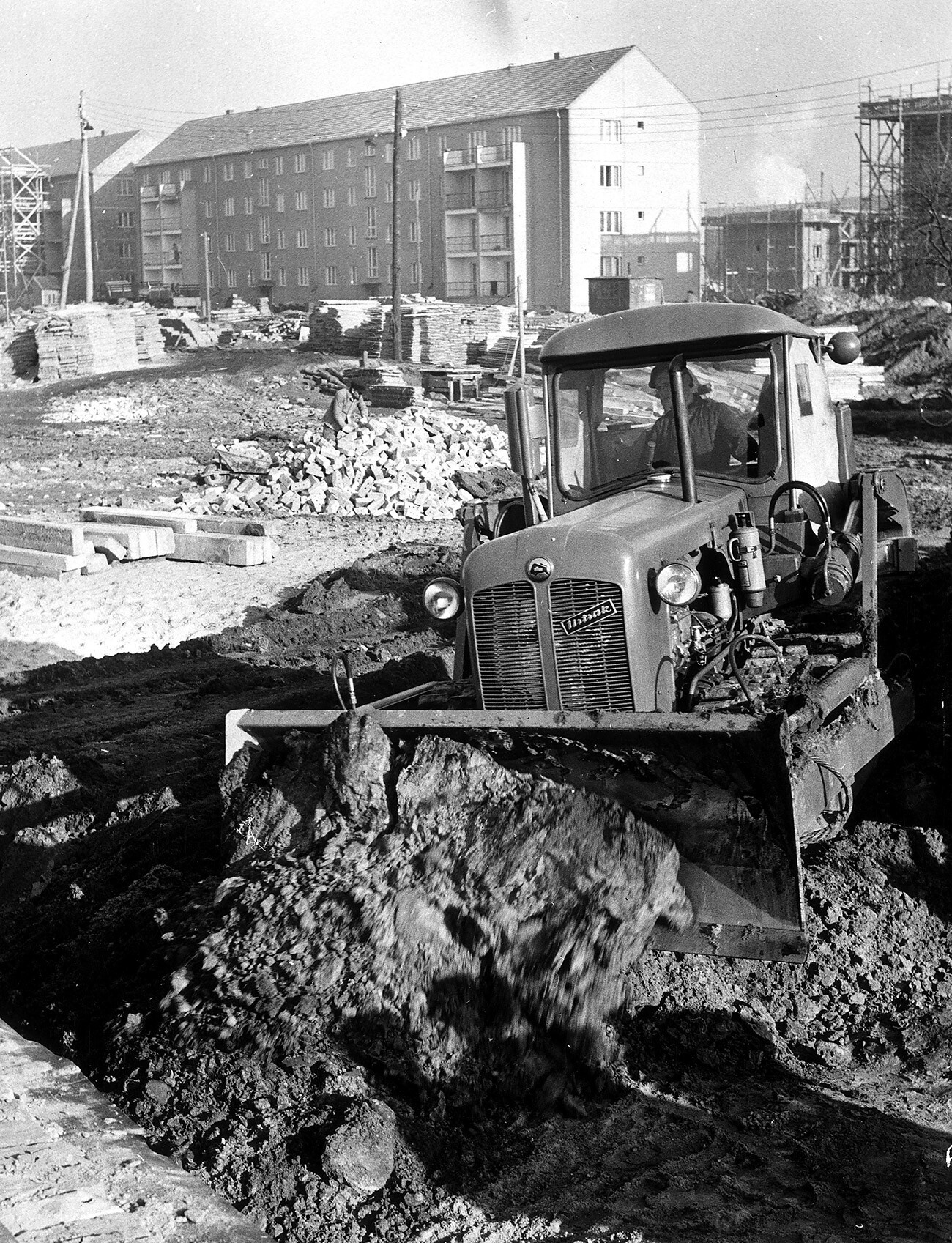
Excavation work, 1959.
Getty ImagesAt the III SED Congress in July 1950, a decision was made to build East Germany’s own metallurgic mill. At the same time, a new law was signed on the construction and restoration of the cities of East Germany. The document spelled out the ‘Sixteen Principles of Urban Design’, and the third principle stated that “to a significant extent, cities are built by industry for industry”. That’s how the Metallurgic Plant named after Joseph Stalin, and then the city of Stalinstadt, appeared in East Germany.
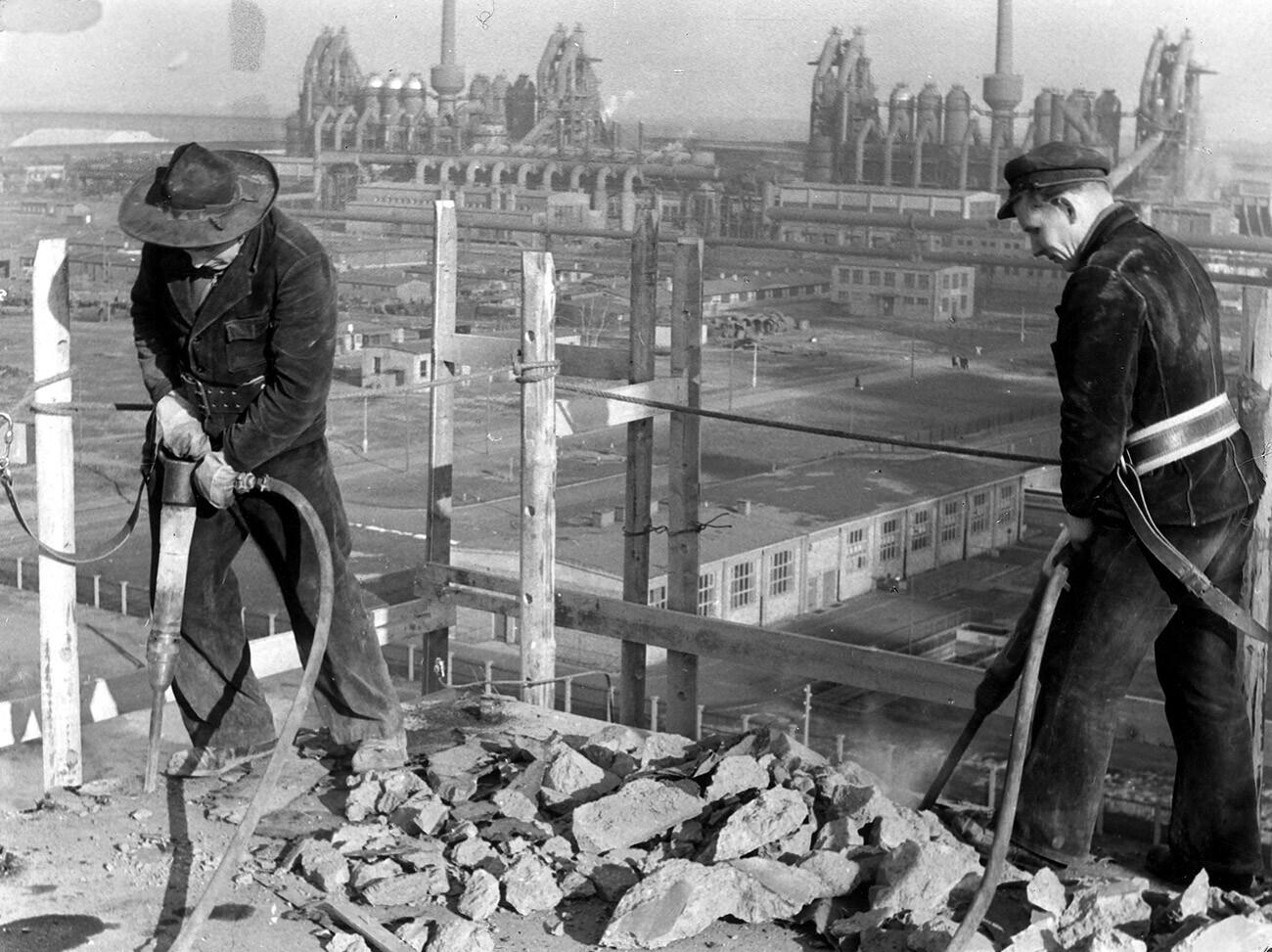
Construction works, 1958.
Getty ImagesThe place for the construction of the plant was chosen on the bank of the Oder River at the border with socialist Poland. In case of the Cold War entering a “hot” phase, the enterprise would be located deep within the territory of East Germany.
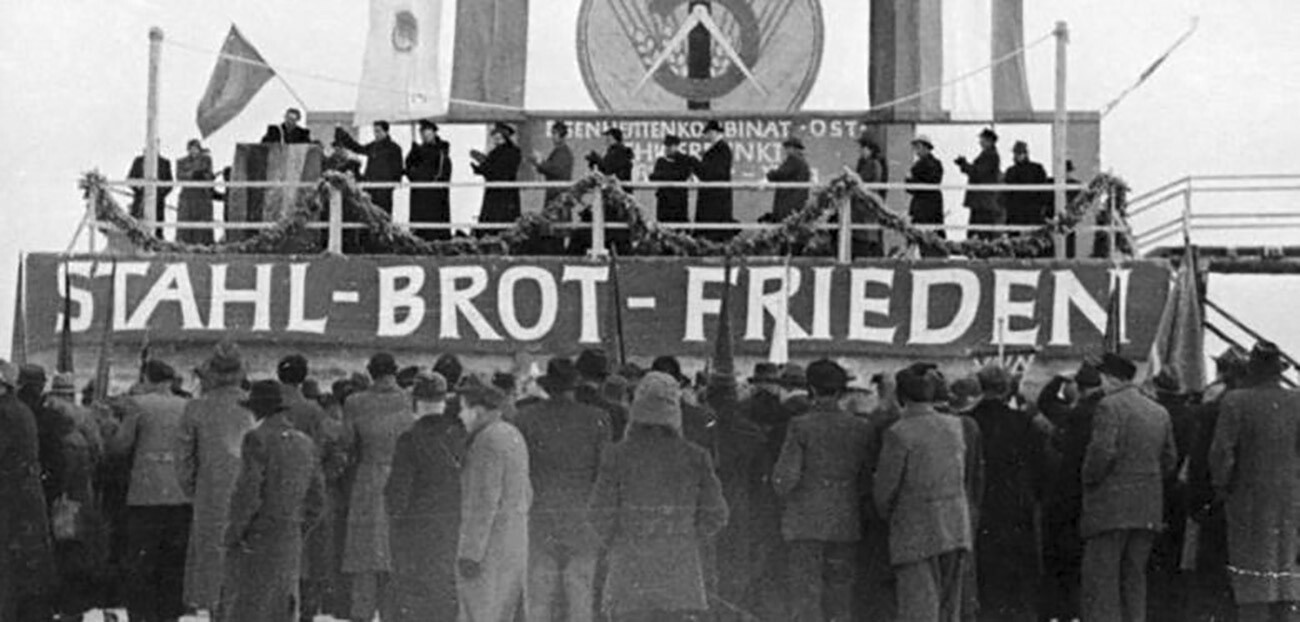
1951: Laying of the foundation stone of the steelworks.
BundesarchivOn January 1, 1951, Fritz Selbmann, Minister for Heavy Industry of East Germany, laid the first stone in the foundation of the first blast furnace. The motto for the construction project was “steel-bread-peace”. On September 19, the plant was already put into operation.
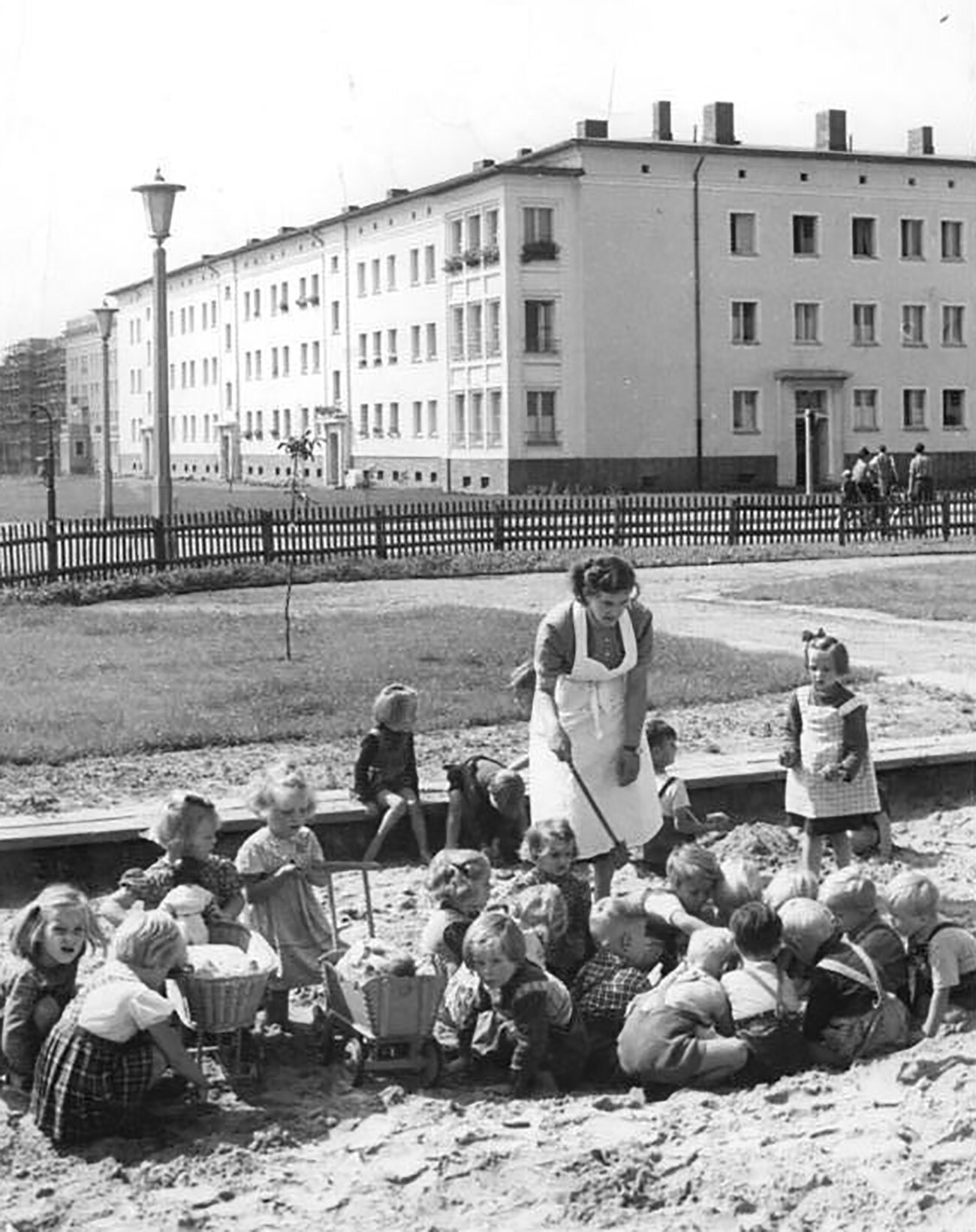
Stalinstadt became the first planned city of East Germany – it was built from the ground up, slightly to the south of the enterprise. This was one of the most important construction projects of East Germany: it was supposed to become an example of the new socialist era.
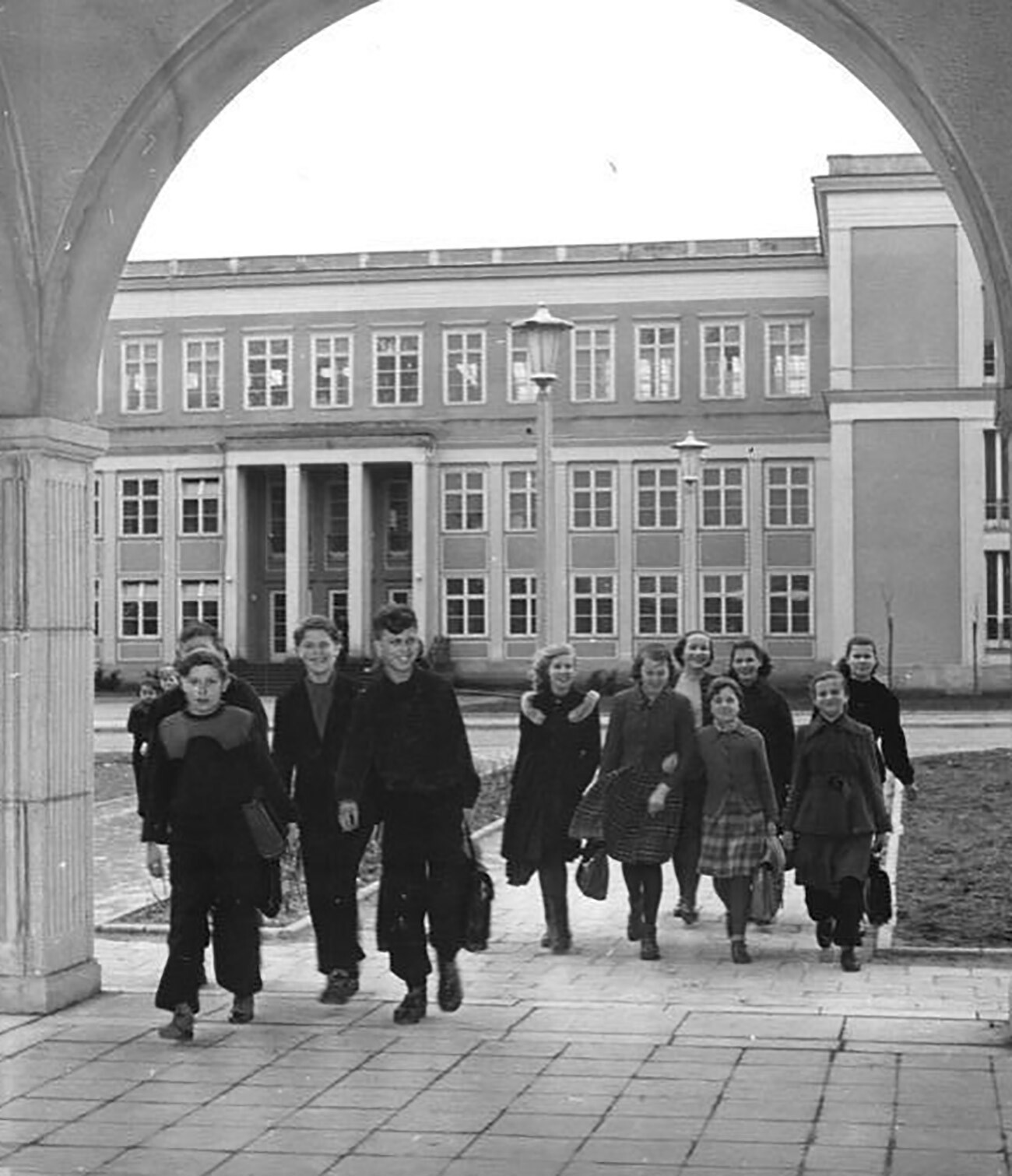
“The goal of urban planning is the harmonious fulfillments of man’s basic rights to employment, housing, culture and recreation,” the ‘Sixteen Principles of Urban Design’ stated. In Stalinstadt, they managed to combine it all – recreation zones with restaurants and cafes, kindergartens and schools, sports grounds. The landscaping of residential districts provided a way to separate them from the plant. Stalinstadt was supposed to become an example of a bright future, a Utopian city glorifying the prosperity of the working class.
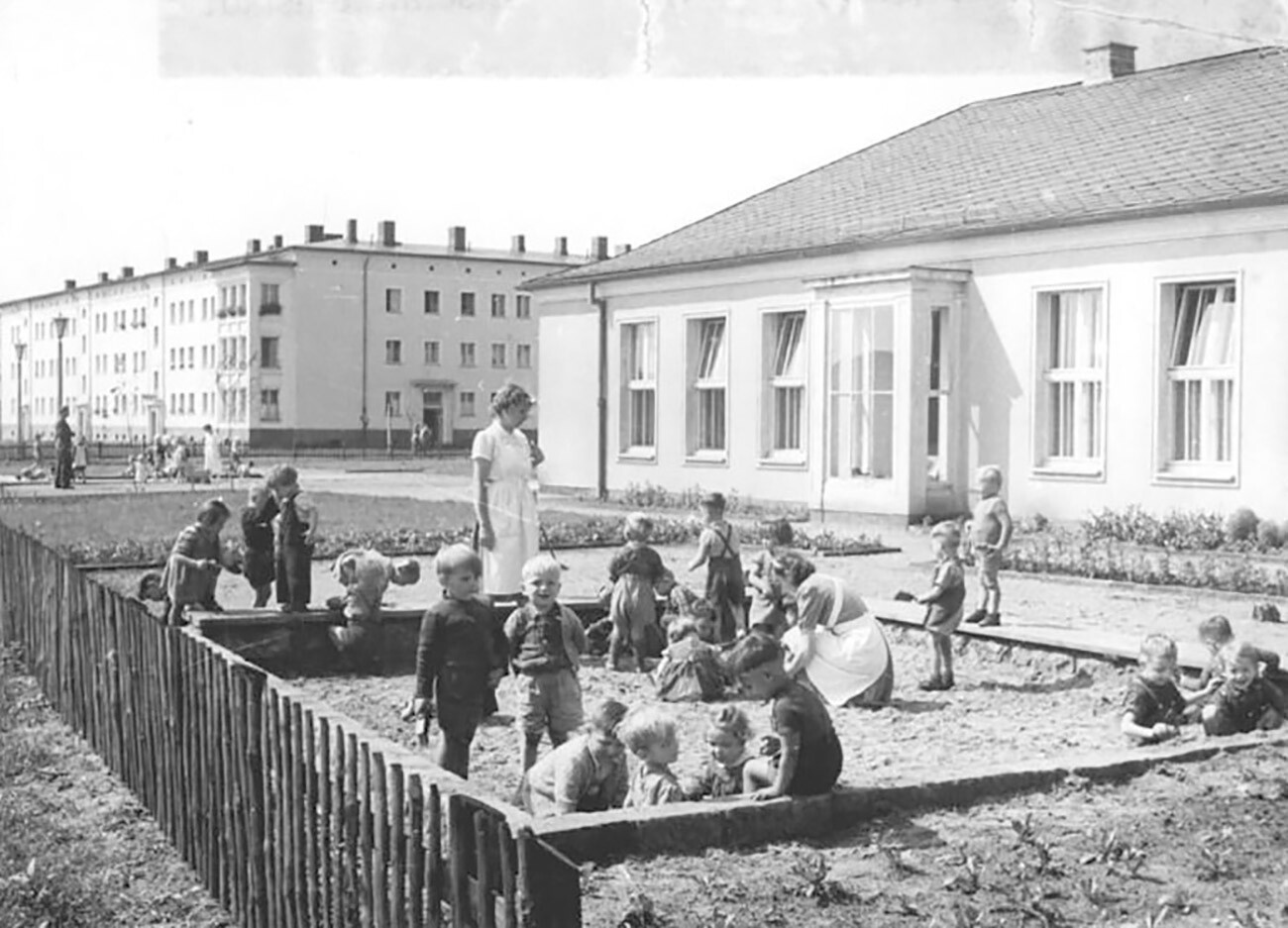
The feature of the city was the complete absence of churches and private property.
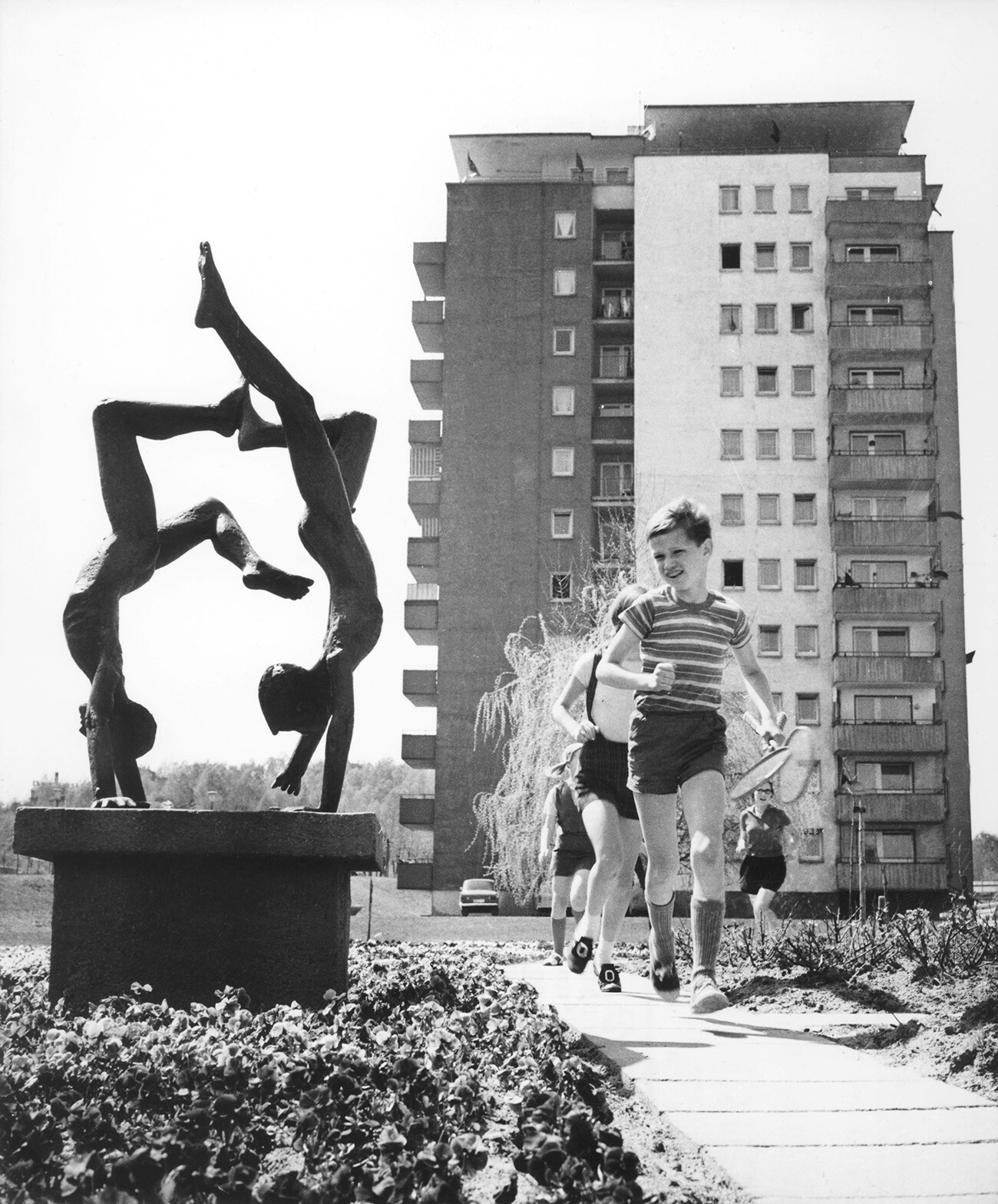
In 1952, Walter Ulbricht, General Secretary of the SED Central Committee, visited the city to personally oversee how the construction of apartment blocks was going. However, he didn’t like what he saw – the apartments were small, their ceilings – low. The general designer was replaced and the streets were filled with examples of the Stalinist Empire style, almost copied from the Moscow buildings of the time.
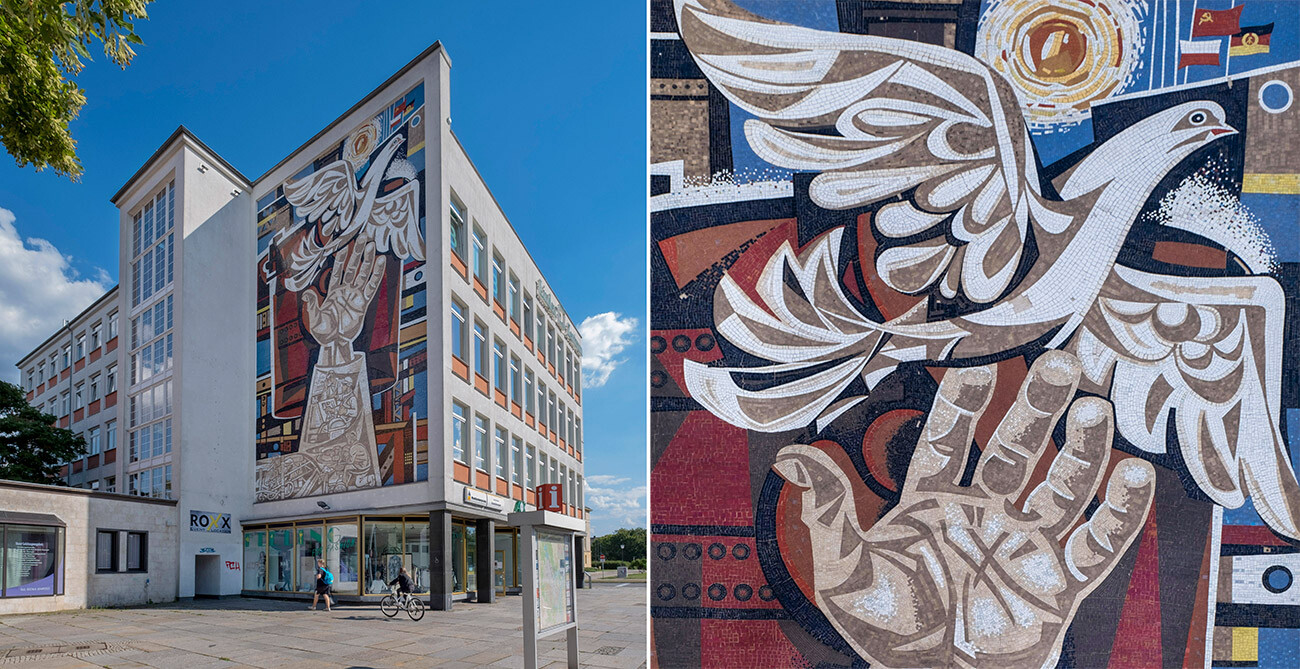
The general plan of Stalinstadt corresponded to all the canons of the USSR’s new constructions: the main square with a town hall was located in the center, the central prospekt (avenue) – the Lenin-alley – led away from the square. Residential districts were built around the center of the city. In its look, Stalinstadt strongly resembled a typical Soviet city.
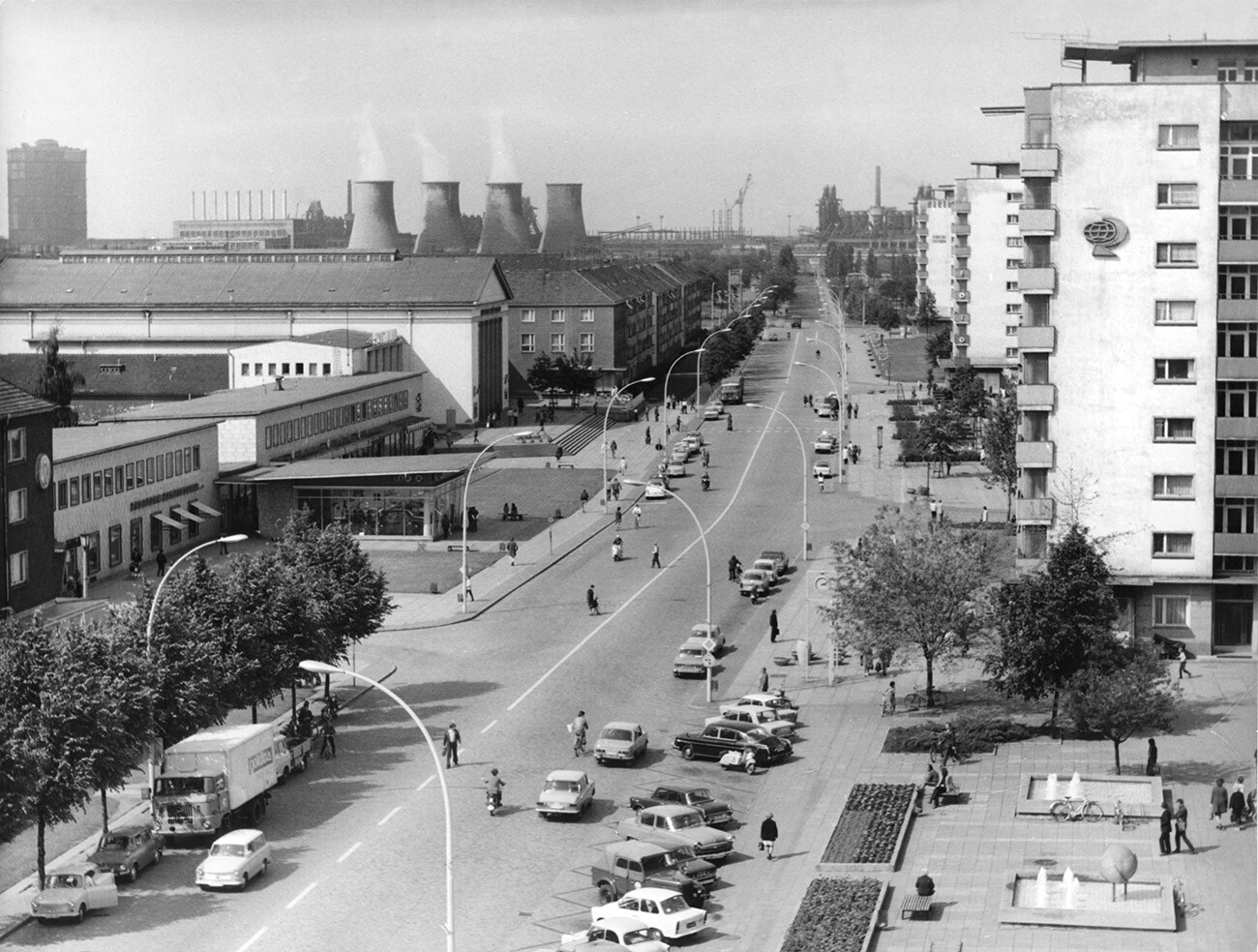
But, in 1955, a resolution was released in the USSR “On elimination of excesses in design and construction”. That spelled the end of the Stalinist Empire style. The budget for the construction of this German city was also cut, so many projects were simplified and new districts were built with standard panel buildings.

At the beginning of the 1960s, the period of de-Stalinization began in the Soviet Union, which also affected East Germany. In 1961, Stalinstadt was renamed Eisenhüttenstadt – the city of a metallurgical plant. The locals shrunk this long name to simply ‘Hütte’, which can be translated as ‘hut’.
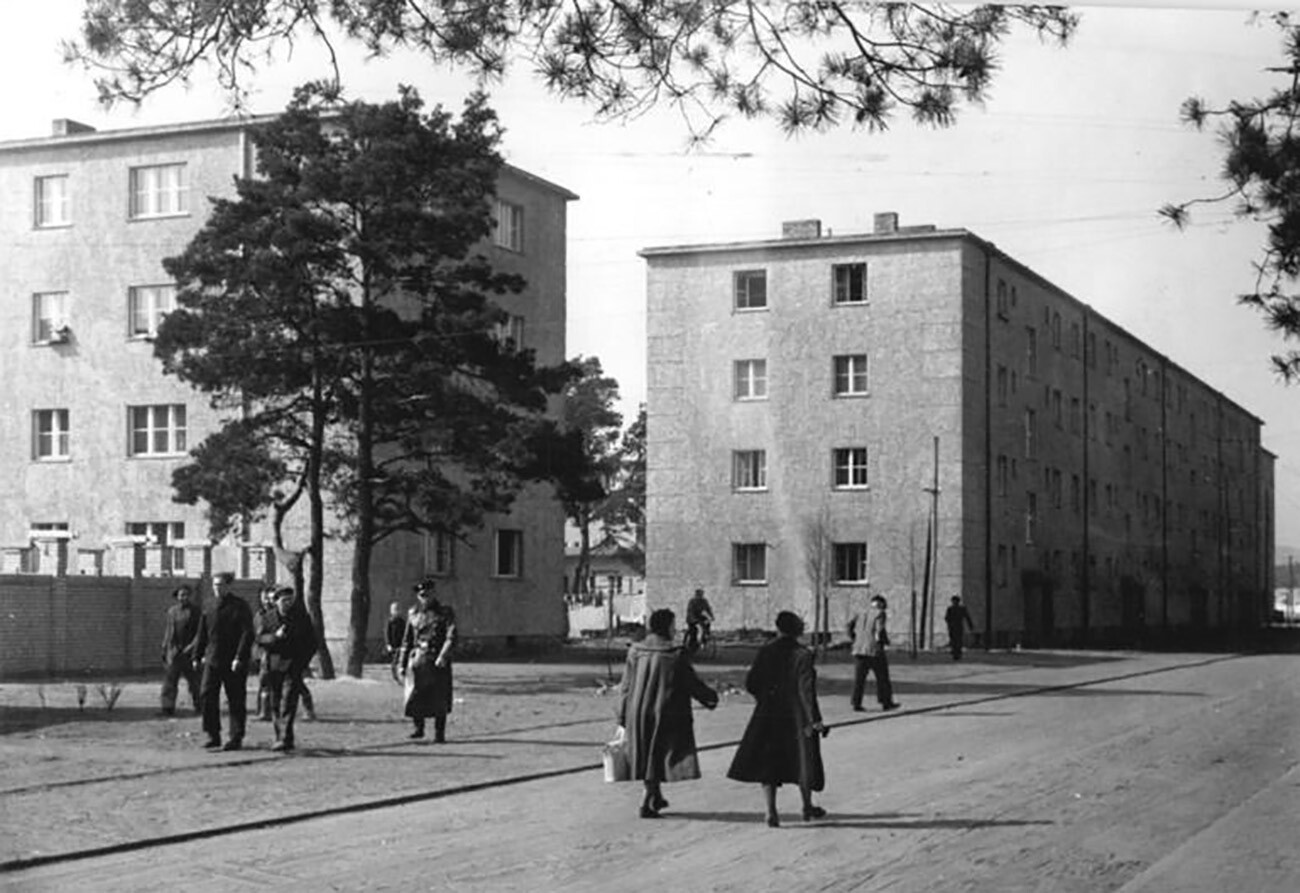
Dear readers,
Our website and social media accounts are under threat of being restricted or banned, due to the current circumstances. So, to keep up with our latest content, simply do the following:
If using any of Russia Beyond's content, partly or in full, always provide an active hyperlink to the original material.
Subscribe
to our newsletter!
Get the week's best stories straight to your inbox